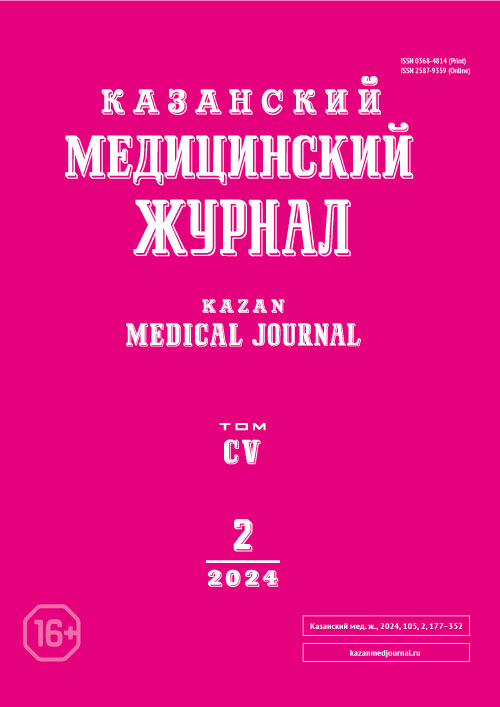Значение научной школы, созданной на базе кафедры гистологии Казанского государственного медицинского университета (к 160-летию кафедры)
- Авторы: Бойчук Н.В.1, Нигметзянова М.В.1, Воробьев В.С.2
-
Учреждения:
- Казанский государственный медицинский университет
- Психологический институт Российской академии образования
- Выпуск: Том 105, № 2 (2024)
- Страницы: 344-350
- Раздел: История медицины
- Статья получена: 07.10.2023
- Статья одобрена: 25.01.2024
- Статья опубликована: 01.04.2024
- URL: https://kazanmedjournal.ru/kazanmedj/article/view/606655
- DOI: https://doi.org/10.17816/KMJ606655
- ID: 606655
Цитировать
Аннотация
В работе дана общая характеристика Казанской нейрогистологической школы, сформировавшейся на базе кафедры гистологии Императорского Казанского университета. Создание школы неразрывно связано с именем профессора К.А. Арнштейна и его прямых учеников — А.С. Догеля и А.Е. Смирнова. Широко известна созданная А.С. Догелем классификация нейронов вегетативной нервной системы. Благодаря усилиям А.Е. Смирнова были установлены научные взаимосвязи со школой С. Рамон-и-Кахаля. Последующие поколения казанских гистологов (Д.А. Тимофеев, А.Н. Миславский, Б.И. Лаврентьев) своими исследованиями в области морфологии нервной системы приумножили славу Казанской нейрогистологической школы. Её ветви дали мощный толчок развитию нейроморфологии и в других отечественных научных лабораториях (Б.И. Лаврентьев, Москва; А.С. Догель, Петербург; Н.Г. Колосов, Поволжье). Постоянные контакты гистологи поддерживали и с клиницистами. Выдающиеся неврологи, трудившиеся в Казани, — В.М. Бехтерев и Л.О. Даркшевич — в своих исследованиях активно взаимодействовали сотрудниками кафедры гистологии — К.А. Арнштейном и А.С. Догелем. В начале 20-х годов XIX века хирургом П.М. Красиным была выполнена обстоятельная работа по дегенерации и регенерации периферических нервов, офтальмолог А.Г. Агабабов впервые описал окончания чувствительных нервов в цилиарной мышце. Проводя самостоятельные исследования, стоматолог И.М. Оксман с учениками развил учение об иннервации зуба и слизистой оболочки полости рта, внеся в свой вклад в изучение организации нервной системы. Последняя четверть XX века ознаменовалась активной деятельностью профессора Э.Г. Улумбекова, сумевшего организовать несколько школ по нейробиологии в Казани на базе кафедры гистологии, объединивших молодых и известных учёных, занимающихся исследованиями нервной ткани. Ученики Э.Г. Улумбекова (Ю.А. Челышев, Н.П. Резвяков, В.В. Валиуллин, Р.Р. Исламов) продолжили дело предшествующих поколений учёных-гистологов, сохраняя традиции Казанской нейрогистологической школы.
Ключевые слова
Полный текст
Об авторах
Наталья Валентиновна Бойчук
Казанский государственный медицинский университет
Автор, ответственный за переписку.
Email: nboychuck@yandex.ru
ORCID iD: 0009-0000-7619-0750
канд. биол. наук, доц., каф. гистологии, цитологии и эмбриологии
Россия, г. КазаньМария Владимировна Нигметзянова
Казанский государственный медицинский университет
Email: marianigmetzanova@yandex.ru
ORCID iD: 0009-0005-6731-4041
канд. биол. наук, доц., каф. гистологии, цитологии и эмбриологии
Россия, г. КазаньВадим Сергеевич Воробьев
Психологический институт Российской академии образования
Email: vorob_vs@mail.ru
ORCID iD: 0009-0006-1886-786X
канд. мед. наук, ст. науч. сотрудник, лаб. психогенетики, Психологический институт
Россия, г. МоскваСписок литературы
- Арнштейн К.А. Учение о нейронах перед судом новейших исследователей. Неврологический вестник. 1900;8(2):a1–a26. doi: 10.17816/nb52867.
- 150 лет Казанской нейрогистологической школе. Выступление профессора Э.Г. Улумбекова 12 мая 2014 г. Анатомический театр КГМУ. https://disk.yandex.ru/d/tCkeLg2UdwSwS (дата обращения: 11.09.2023).
- Догель А.С. К вопросу о строении нервных клеток и отношении осевоцилиндрического (нервного) их отростка к протоплазматическим (дендритам). Известия Императорского Томского университета.1892; 23 с.
- Забусов Г.И., Маслов А.П. К 100-летию кафедры гистологии Казанского медицинского института (1804–1964). Казанский медицинский журнал. 1964;45(2):76–79. doi: 10.17816/kazmj58336.
- Иванов А.Ю. Казанский государственный медицинский университет в зеркале социокультурной истории. Казань: Медицина; 2014. 352 с.
- Казанская нейрогистологическая школа (буклет). Казань; 2014. 30 с. http://yadi.sk/d/iPouS0f4RrTPB (дата обращения: 11.09.2023).
- Челышев Ю.А., Швалев В.Н., Бойчук Н.В. Навстречу 150-летнему юбилею Казанской нейрогистологической школы. Морфология. 2014;145(1):81–85. EDN: RVVRIZ.
- Заварзин А.А. Памяти Б.И. Лаврентьева. В кн.: Морфология автономной нервной системы. Под ред. Б.И. Лаврентьева. 2-е изд. М.: Медгиз; 1946. с. 7–12.
- Колосов Н.Г. Борис Иннокентьевич Лаврентьев (биографический очерк). В кн.: Лаврентьев Б.И. Теория строения вегетативной нервной системы (избранные труды). Под ред. В.В. Португалова. М.: Медицина; 1983. с. 17–29.
- Колосов H.Г. Памяти Александра Николаевича Миславского (1880–1958). Архив анатомии, гистологии и эмбриологии. 1959;(4);107–111.
- Колосов Н.Г. Проф. А.Н. Миславский и Казанская гистологическая лаборатория. Труды Татарского института теоретической и клинической медицины. 1935;(II):3–11.
- Safiullov Z, Izmailov A, Sokolov M, Markosyan V, Kundakchan G, Garifulin R, Shmarov M, Naroditsky B, Logunov D, Islamov R. Auto¬logous genetically enriched leucoconcentrate in the preventive and acute phases of stroke treatment in a mini-pig model. Pharmaceutics. 2022;14:2209. doi: 10.3390/pharmaceutics14102209.
- Islamov R, Bashirov F, Izmailov A, Fadeev F, Markosyan V, Sokolov M, Shmarov M, Logunov D, Naroditsky B, Lavrov I. New therapy for spinal cord injury: Autologous genetically enriched leucoconcentrate integrated with epidural electrical stimulation. Cells. 2022;11(1):144. doi: 10.3390/cells11010144.
- Chelyshev Y. More attention on segments remote from the primary spinal cord lesion site. Front Biosci. 2022;27(8):235. doi: 10.31083/j.fbl2708235.
- Islamov RR, Mishagina EA, Tyapkina OV, Shajmardanova GF, Eremeev AA, Kozlovskaya IB, Nikolski EE, Grigorjev AI. Mechanisms of spinal motoneurons survival in rats under simulated hypogravity on the Еarth. Acta Astronautica. 2011;68:1469–1477. DOI: j.actaastro.2009.12.001.
Дополнительные файлы






